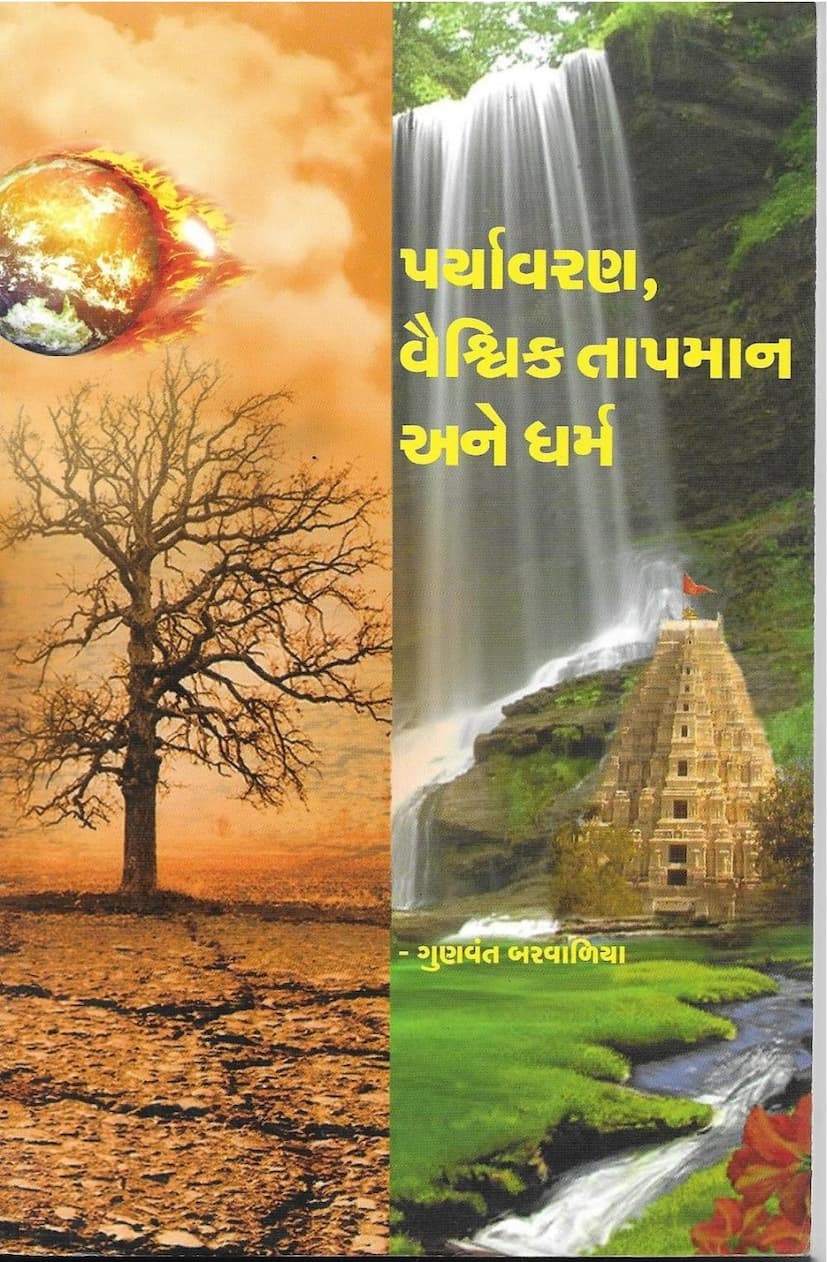Paryavaran Vaishvik Tapman Ane Dharm
Added to library: September 2, 2025

Summary
The book "Paryavaran, Vaishwik Tapman Ane Dharm" (Environment, Global Warming and Religion) by Gunvant Barvalia, published by Pravin Prakashan, explores the intricate relationship between environmental issues, particularly global warming, and various world religions. The author aims to highlight how different religious perspectives can contribute to understanding and addressing these critical challenges.
Key Themes and Content:
The book provides a comprehensive overview of environmental concerns, emphasizing the urgency of global warming as a threat to the survival of all life on Earth. It acknowledges the vastness and depth of the subject, recognizing the difficulty of encompassing all aspects within a single volume. The author asserts that religious leaders, thinkers, and founders of all faiths have contemplated the balance of nature and the well-being of the biosphere.
Religious Perspectives on Environment:
A significant portion of the book is dedicated to examining the environmental philosophies and concepts within various religions. It covers:
- Hinduism (Vedic Tradition): The text highlights Hinduism's reverence for nature, recognizing the divine in natural elements like Earth, atmosphere, and sky. The concept of Panchamahabhuta (five great elements: Earth, Water, Fire, Air, and Ether) and their worship is discussed. The importance of trees, rivers (Ganga, Saraswati), forest conservation, and practices like Chipko Andolan are mentioned as examples of the tradition's environmental consciousness. The author also touches upon the complexities of Vedanta's view on the material world and the need for a balanced approach to development and environmental ethics.
- Buddhism: The book delves into Buddhism's emphasis on compassion for all sentient beings, extending to the entire ecosystem. The interconnectedness of existence and the concept of karma are discussed in relation to environmental harmony. Buddhist scholars advocate for a mindful approach to consumption and the interconnectedness of all life forms.
- Jainism: Jainism is presented as a religion deeply rooted in environmental protection. The core principles of Ahimsa (non-violence), Aparigraha (non-possession), and Anekantavada (non-absolutism) are shown to have profound environmental implications. The Jain emphasis on respecting all life forms, including even the smallest organisms and inanimate elements, is presented as a powerful framework for ecological preservation. The rigorous practices of Jain monks and nuns in minimizing harm to the environment are highlighted.
- Christianity: The book notes the growing awareness among Christian ethicists and theologians regarding environmental challenges. It discusses the reinterpretation of biblical texts to foster a deeper connection with nature, recognizing creation as God's beloved work, meant for human stewardship and companionship with other creatures.
- Islam: Islamic teachings, particularly from the Quran, are shown to indirectly emphasize environmental protection. The significance of Earth as God's creation, the purity of water for prayer, and the reverence for greenery are discussed. The concept of a beautiful garden (paradise) as depicted in the Quran suggests a link between earthly environmental care and heavenly reward.
- Confucianism: The text examines Confucian thought, which views humans as interconnected beings within a social and natural order. The emphasis on collective good and social harmony translates into a responsibility for environmental well-being.
- Shinto: Shinto's deep reverence for nature and the integration of environmental consciousness into its religious practices and festivals are highlighted. The Shinto belief that spirits inhabit natural elements underscores the importance of respecting and protecting the environment.
- Zoroastrianism (Parsi Tradition): The Zoroastrian faith's reverence for elements like fire, water, and Earth is discussed. The Zoroastrian practice of environmental purity and their ethical injunctions against polluting natural resources are presented as significant contributions to ecological awareness.
- Judaism: The book notes that while direct environmental discourse might be less prominent in historical Jewish texts, interpretations of creation narratives emphasize humanity's role as stewards of God's creation. The concept of Sabbath and its prohibition of certain activities that alter nature is seen as a form of environmental regulation. The idea of Jews as "tenants" of the Earth, rather than owners, reinforces responsible resource management.
Environmental Challenges and India's Role:
The book addresses the historical context of environmental degradation, tracing it back to industrialization and the rise of consumerism. It highlights the scientific understanding of phenomena like the greenhouse effect and ozone depletion, citing international efforts like the Montreal Protocol and Kyoto Protocol. The text also discusses the impact of global warming on India, including issues like rising sea levels, water scarcity, and the consequences of unscientific development projects in ecologically sensitive areas like the Himalayas. The author critically examines India's position in international climate negotiations, emphasizing the disproportionate contribution of developed nations to greenhouse gas emissions compared to India.
Personal Responsibility and Lifestyle Changes:
The book stresses the need for individual responsibility and lifestyle changes to mitigate environmental damage. It advocates for a shift from a consumerist culture to a culture of mindful utilization, emphasizing the importance of Ahimsa and Sanyam (restraint) as advocated in Jainism. The text includes inspiring stories of environmental activism and sacrifice, such as the Chipko movement and the martyrdom of Amrita Devi. The poignant message of a young girl, Severn Suzuki, at the Earth Summit is also included, urging adults to take action to protect the future.
The Role of Science and Spirituality:
The book explores the intersection of science and spirituality, suggesting that a deeper understanding of nature can be found in ancient traditions like the Upanishads. It highlights the growing importance of green chemistry and sustainable technologies as solutions to environmental problems. The author also underscores the need for a paradigm shift in our thinking, moving from exploitation to integration and respect for nature.
Conclusion:
"Paryavaran, Vaishwik Tapman Ane Dharm" is a call to action, urging readers to recognize the interconnectedness of all life and the profound responsibility that humans have towards the environment. It emphasizes that religious and spiritual values, when properly understood and applied, can provide a strong ethical foundation for environmental protection and contribute to a sustainable future for the planet.